
The 10 Best Trello Alternatives for 2024
-
by Anoop Singh
- 9
- Best overall: ClickUp
- Best for complex projects: Wrike
- Best for customization: monday.com
- Best for agile development: Jira
- Best for enterprise project management: Microsoft Project
- Best for real-time collaboration: Taskade
- Best for productivity: Hive
- Best for scaling teams: Asana
- Best for spreadsheet project management: Airtable
- Best for simple project management: ProofHub
Trello is a pioneer of project management solutions that uses a kanban-style user interface. Since its launch in 2011, Trello has continued to evolve and revamp its card system and has arguably the best kanban boards among its competitors to date.
However, since Trello leans heavily toward visual project management, it won’t be ideal for every kind of user as they may seek some enhanced features, customization options and integrations that might better fit their needs.
Should you be one of the users seeking a better fit, here are some of the top Trello alternatives for 2024.
1
monday.com
Employees per Company Size
Micro (0-49), Small (50-249), Medium (250-999), Large (1,000-4,999), Enterprise (5,000+)
Any Company Size
Any Company Size
Features
Agile Development, Analytics / Reports, API, and more
2
Quickbase
Employees per Company Size
Micro (0-49), Small (50-249), Medium (250-999), Large (1,000-4,999), Enterprise (5,000+)
Small (50-249 Employees), Medium (250-999 Employees), Large (1,000-4,999 Employees), Enterprise (5,000+ Employees)
Small, Medium, Large, Enterprise
Features
Agile Development, Analytics / Reports, API, and more
3
Wrike
Employees per Company Size
Micro (0-49), Small (50-249), Medium (250-999), Large (1,000-4,999), Enterprise (5,000+)
Medium (250-999 Employees), Large (1,000-4,999 Employees), Enterprise (5,000+ Employees)
Medium, Large, Enterprise
Features
Agile Development, Analytics / Reports, API, and more
Best Trello alternatives comparison
(per month) |
|||||
|---|---|---|---|---|---|
| Trello | |||||
| ClickUp | |||||
| Wrike | |||||
| monday.com | |||||
| Jira | |||||
| Microsoft Project | |||||
| Taskade | |||||
| Hive | |||||
| Asana | |||||
| Airtable | |||||
| ProofHub |
ClickUp: Best overall

Our rating: 5 out of 5
ClickUp, our pick for the best overall Trello alternative, is well known for its versatility and extensive customization capabilities. It offers over 20 project views, including kanban boards, Gantt charts, timelines and calendars, which means it’s quite adaptable to a variety of project management methodologies. ClickUp also offers automation tools alongside ClickUp AI to allow users to automate repetitive tasks, set up complex workflows, streamline processes and generate content, enhancing overall productivity.
Why we chose ClickUp
We found ClickUp to be a great alternative to Trello since it combines flexibility with a comprehensive feature set, which is something that Trello struggles to achieve. The tool’s capacity to adapt to different workflow needs, combined with an effective free plan, makes it accessible and valuable for both small and large teams.
For more information, read the full ClickUp review.
Pricing
- Free Forever: Free.
- Unlimited: $7 per member per month, billed annually, or $10 per member per month, billed monthly.
- Business: $12 per member per month, billed annually, or $19 per member per month, billed monthly.
- Enterprise: Custom pricing available.
Features
- Over 20 project views, including kanban, Gantt, timeline and calendar views, providing diverse options to visualize your work.
- Advanced automation tools for automating repetitive tasks, setting up workflows and enhancing productivity.
- ClickUp Brain, which offers AI knowledge management, AI project management and AI writing tools.
- Time tracking and goal tracking features to monitor project progress and team performance.
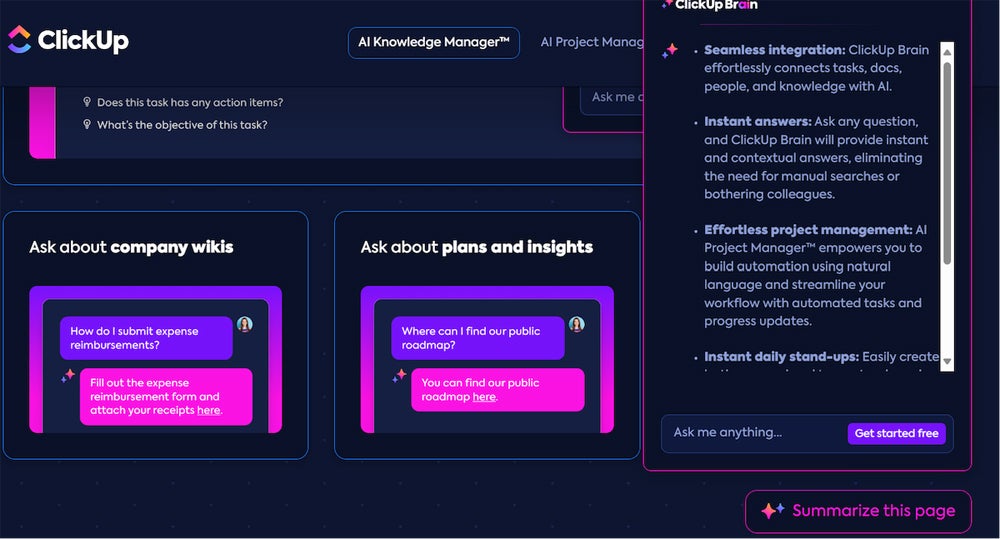
Integrations
ClickUp’s top integrations include Slack, Google Workspace, Microsoft Teams, Trello and Asana.
Pros and cons
|
|
Wrike: Best for complex projects

Our rating: 4.6 out of 5
Wrike is quite a departure from Trello as it’s a tool that offers an extensive feature set for project management, capable of handling complex projects that Trello would struggle with. It features customizable dashboards, real-time updates and various project views, including Gantt charts and kanban boards. Wrike also offers detailed reporting tools and extensive integration capabilities as it integrates with over 400 apps and custom integrations.
Why we chose Wrike
Wrike’s strength is its extensive set of features. These features set up Wrike as an end-to-end project management tool, which makes Trello and a few other tools on this list feel lightweight. It’s a great alternative for a user who wants to manage all aspects of their project without having to integrate multiple tools to achieve that goal.
For more information, read the full Wrike review.
Pricing
- Free: Free for unlimited users.
- Team: $9.80 per user per month.
- Business: $24.80 per user per month.
- Enterprise: Custom pricing available.
- Pinnacle: Custom pricing available.
Features
- Customizable dashboards for personalized views of project progress and tasks.
- Real-time collaboration tools, including document sharing and task commenting.
- Extensive reporting and analytics for insights into project performance and resource utilization.
- Advanced resource management features for allocating and tracking team workloads.
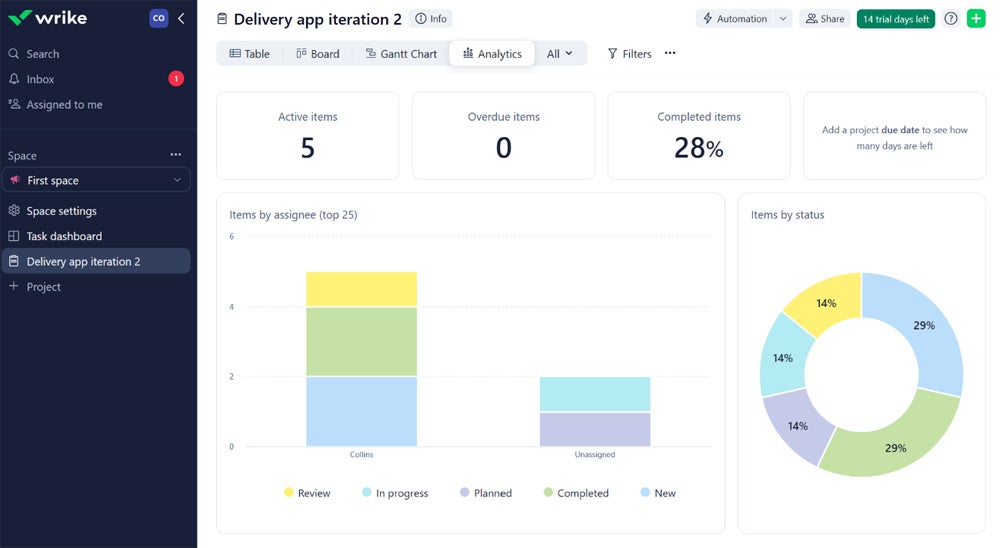
Integrations
Wrike’s top integrations are Salesforce, Dropbox, Microsoft Office, Slack and Google Drive.
Pros and cons
|
|
Features
- 200+ templates and multiple project views, including kanban, Gantt, timeline and calendar.
- Advanced automation tools for setting up custom workflows and automating repetitive tasks.
- Time tracking and workload management features.
- monday workdocs for centrally connecting, collaborating and executing ideas and workflows.

Integrations
Some top integrations you can expect from monday.com include Slack, Google Drive, Microsoft Teams, Trello and Zoom.
Pros and cons
|
|
Jira: Best for agile development

Our rating: 4.6 out of 5
Jira is a project management tool tailored for Agile development teams. It’s especially suitable for software development teams as it offers robust features for managing sprints, tracking issues and integrating with development tools like GitHub and Bitbucket, alongside detailed reporting and customizable workflows. Trello is better for general project management. However, if you need a more powerful solution that offers a high level of customization and advanced tools, then Jira would be the better solution.
Why we chose Jira
We found Jira’s specialized features for Agile development and extensive integration options to be perfect for managing software projects. Additionally, it’s easy to integrate with Trello as both tools are in the Atlassian ecosystem.
For more information, read the full Jira review or see how Jira compares to Trello.
Pricing
- Free: Free for up to 10 users.
- Standard: $8.15 per user per month, billed monthly.
- Premium: $16 per user per month, billed monthly.
- Enterprise: Custom pricing available.
Features
- Robust agile project management features, including scrum and kanban boards for sprint planning and task tracking.
- Advanced issue tracking and bug tracking capabilities to manage software development.
- Highly customizable workflows to fit a variety of team processes and project requirements.
- Detailed reporting and analytics to monitor project progress and team performance.
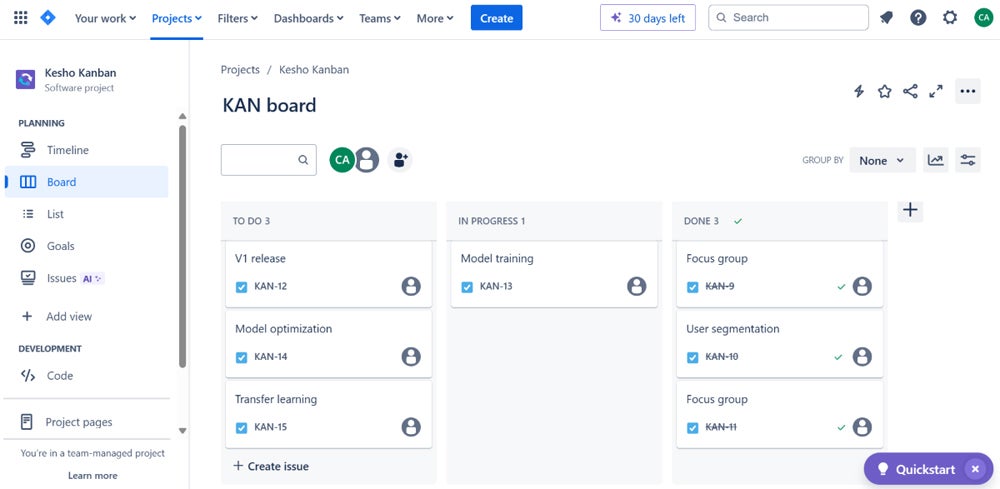
Integrations
Jira’s top integrations are GitHub, Bitbucket, Confluence, Slack and Microsoft Teams.
Pros and cons
|
|
Microsoft Project: Best for enterprise project management
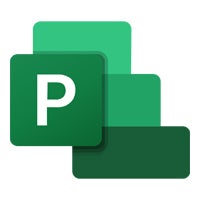
Our rating: 3.4 out of 5
Microsoft Project is designed for large enterprises with advanced project scheduling, resource management and detailed reporting capabilities. As a Microsoft product, its integration with Microsoft 365 is unsurprisingly strong, which ensures seamless collaboration and data sharing across an organization. If you’re already using other Microsoft products, Project is worth considering for enterprise project management.
Why we chose Microsoft Project
We found Microsoft Project’s seamless integration with other Microsoft tools to be exceptionally beneficial for enterprise users who are already within the Microsoft ecosystem.
For more information, read the full Microsoft Project review.
Pricing
- Planner Plan 1: $10 per user per month, billed annually.
- Planner Plan 3: $30 per user per month, billed annually.
- Planner Plan 5: $55 per user per month, billed annually.
Features
- Advanced project scheduling tools.
- Resource management capabilities to allocate and track team workloads and project resources.
- Thorough analytics and reporting tools.
- Variety of dashboard views and prebuilt reports.
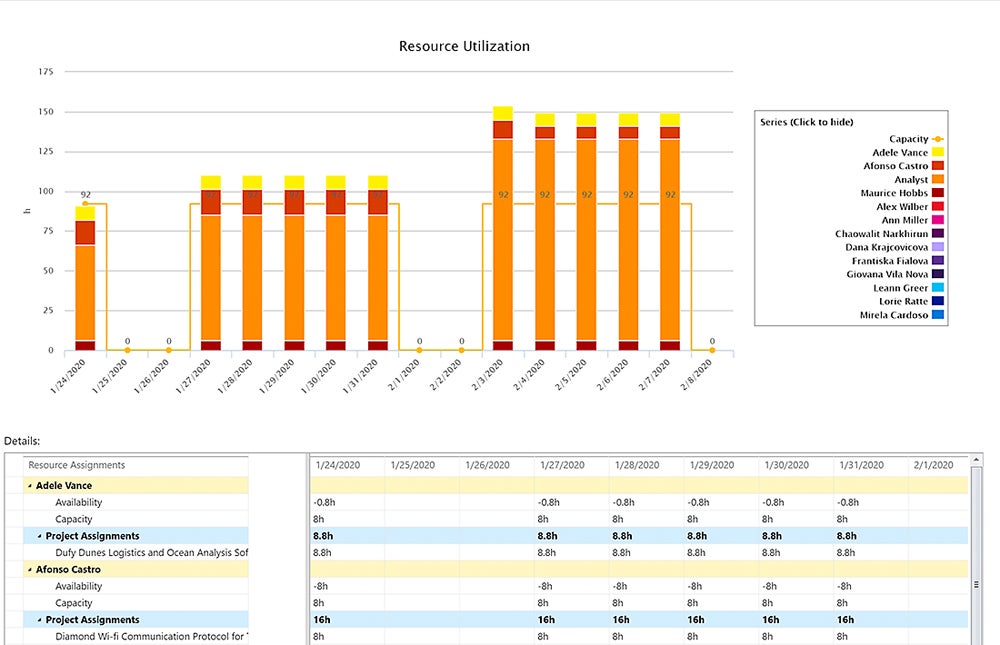
Integrations
As expected, Microsoft Project’s top integrations are Microsoft products like Microsoft 365, SharePoint, OneDrive, Teams and Power BI.
Pros and cons
|
|
Taskade: Best for real-time collaboration

Taskade is an easy-to-use project management solution known for its excellent team collaboration via a minimalist interface. You can enjoy free and unlimited chat and video conferencing for every project in Taskade. Taskade’s collaboration capabilities and ease of use are supported by AI project management features capable of automating more than 700 tasks across a variety of workflows.
Why we chose Taskade
The fact that communication features are free forever, even in the free tier, got our attention as these features are crucial to supporting real-time collaboration. Additionally, its widespread AI capabilities make project management much easier and make Taskade a worthy Trello competitor.
For more information, read the full Taskade review.
Pricing
- Free plan available.
- Pro: $8 per user per month, billed annually.
- Team: $16 per user per month, billed annually.
Features
- Real-time collaboration tools for instant team communication and project updates.
- Customizable project views like list, board, action, org chart and mind map.
- Taskade AI for an AI-powered workspace.
- Built-in templates for various project types.
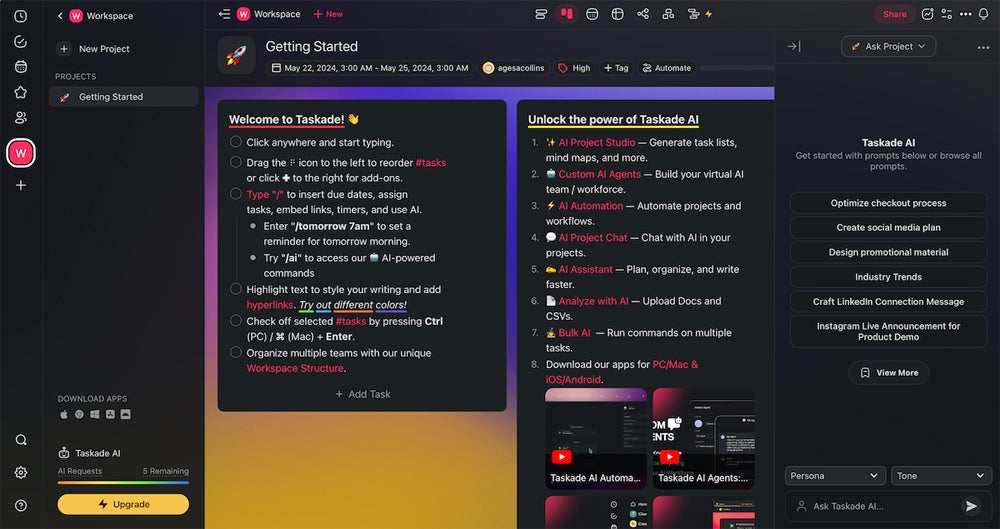
Integrations
Taskade’s top integrations are Slack, Google Drive, Trello, Zoom and Dropbox.
Pros and cons
|
|
Hive: Best for productivity

Our rating: 3.9 out of 5
With features like task management, time tracking and robust analytics, Hive is a great alternative for larger teams that have outgrown Trello. Hive’s intuitive interface and powerful features help teams stay organized and on track. In particular, Hive’s analytics tools allow project managers to quickly visualize project and performance data to identify any issues that need attention. In addition, Hive offers stronger communication features than Trello’s @mention system. Hive includes real-time notifications and a built-in instant messaging system.
Why we chose Hive
We found Hive’s focus on productivity and detailed analytics to have a telling impact on project completion rates. I appreciated its robust collaboration features, which helped to stay coordinated and on track and made it easier to manage multiple projects simultaneously.
For more information, read the full Hive review.
Pricing
- Free: Free forever plan available.
- Starter: $5 per user per month, billed annually, or $7 per user per month, billed monthly.
- Teams: $12 per user per month, billed annually, or $18 per user per month, billed monthly.
- Enterprise: Custom pricing available.
Features
- Flexible project hierarchies for separating projects.
- Seamless agile management via sprints and agile scoring.
- Variety of project layouts, including detailed Gantt charts.
- Collaborative features, including real-time chat, file sharing and task commenting.
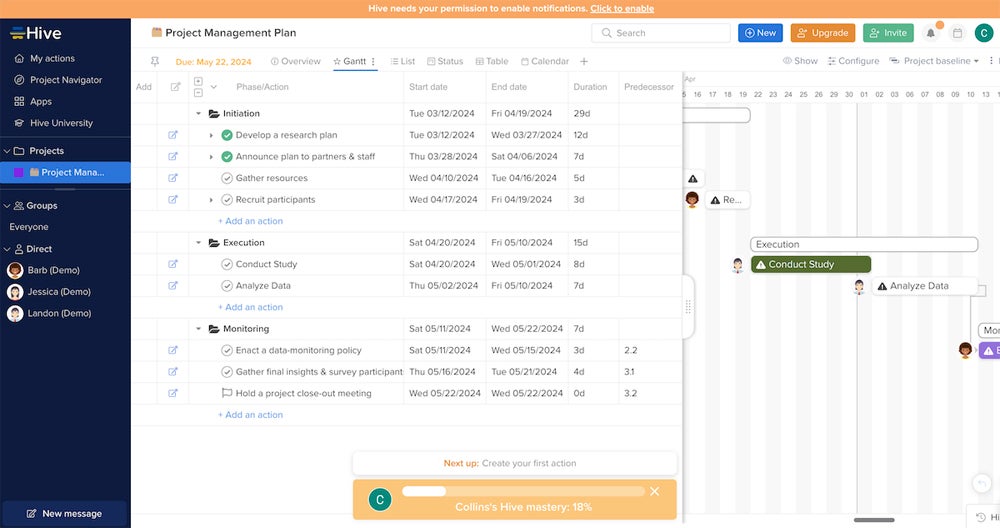
Integrations
Hive’s top integrations are Slack, Google Drive, Microsoft Teams, Zoom and Salesforce.
Pros and cons
|
|
Asana: Best for scaling teams

Our rating: 3.9 out of 5
As a Trello alternative, Asana might just be one of the closest comparisons, but with more flexibility — so much so that Asana has a built-in tool to import your Trello boards with one click. Asana breaks away from the limited board view scope of Trello and instead focuses on projects. Asana is known for its flexibility and robust features as it offers various project views, automation tools and integrations.
Why we chose Asana
Asana’s scalability and flexibility earned it a spot on our list as it’s a tool that will appeal to users who love Trello but want that much more functionality and versatility that’s noticeably absent in Trello. I found its robust feature set to be fit for complex project management needs while still maintaining an aspect of visual project management not dissimilar to Trello.
For more information, read the full Asana review.
Pricing
- Personal: Free.
- Starter: $10.99 per user per month, billed annually, or $13.49 per user per month, billed monthly.
- Advanced: $24.99 per user per month, billed annually, or $30.49 per user per month, billed monthly.
- Enterprise: Custom pricing available.
- Enterprise+: Custom pricing available.
Features
- Agile support with kanban workflows.
- Native time tracking.
- Advanced automation features for streamlining workflows.
- A library of customizable templates for various project types.
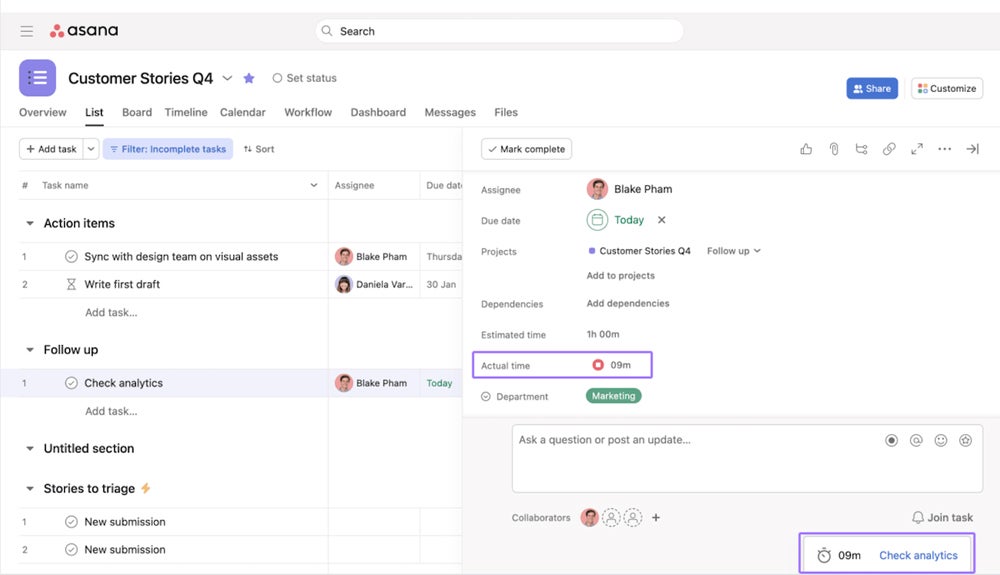
Integrations
Some of Asana’s top integrations include Slack, Google Drive, Microsoft Teams, Zoom and Salesforce.
Pros and cons
|
|
Airtable: Best for spreadsheet project management
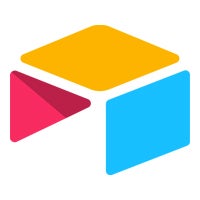
Our rating: 3.8 out of 5
Airtable is a unique project management tool that’s based on a spreadsheet and database model. Think of it as Excel or Google Sheets supercharged specifically for project management. Airtable is perfect for teams with data-intensive workflows. By incorporating the tools of a spreadsheet and database, Airtable helps organize projects that involve large data sets or asset management.
Why we chose Airtable
The spreadsheet interface offers a different dynamic than all the Trello alternatives we’ve tried in this list. For someone who deals with spreadsheets often, this was easy to understand and use. This spreadsheet interface also makes it easy to visualize complex projects.
For more information, read the full Airtable review.
Pricing
- Free: Free for up to 5 editors.
- Team: $20 per user per month, billed annually, or $24 per user per month, billed monthly.
- Business: $45 per user per month, billed annually, or $54 per user per month, billed monthly.
- Enterprise Scale: Custom pricing available.
- Airtable AI: From $6 per seat per month.
Features
- A spreadsheet-based user interface.
- Customizable data views, including grid, calendar, gallery, Gantt and kanban.
- Automations to streamline team processes and cut out clutter.
- Advanced filtering, sorting and grouping options for data management.
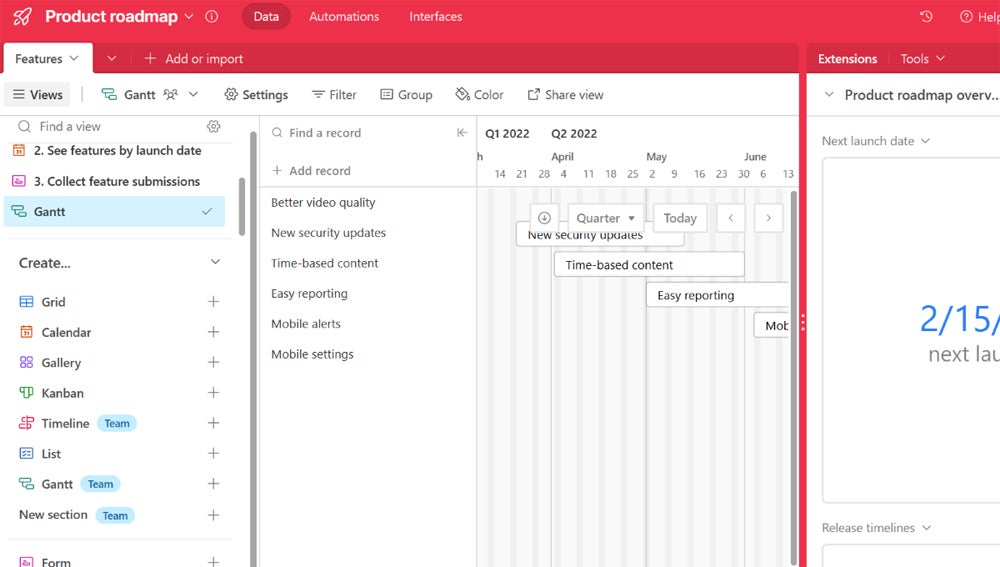
Integrations
Airtable’s top integrations are Slack, Google Drive, Zapier, Gmail and Dropbox.
Pros and cons
|
|
ProofHub: Best for simple project management

ProofHub builds on some of the core features of Trello without adding undue complexity. This includes ProofHub’s powerful proofing and project management tracking tools that are easily accessible. Some advanced tools offered by ProofHub include custom reporting and workflows — which are strong communication features — and project-tracking tools that work particularly well for project managers. ProofHub is a great alternative to Trello for teams that need more advanced features than what Trello offers but still want a highly accessible tool.
Why we chose ProofHub
Proofhub made it onto our list of Trello competitors because, even though it has a surprisingly wide range of features, it manages to present them simply and intuitively. As simple as it may seem, ProofHub is a versatile tool that fits into workflows and industries of all kinds.
For more information, read the full ProofHub review.
Pricing
- Essential: $45 per month, billed annually, or $50 per month, billed monthly.
- Ultimate Control: $89 per month, billed annually, or $99 per month, billed monthly.
Features
- Agile project management capabilities to track sprints, visualize deadlines and more.
- Customizable workflows with Kanban boards and advanced filtering capabilities.
- Collaboration tools, including file sharing, discussions, commenting, knowledge wikis, notifications, announcements and real-time chat.
- Admin controls and custom roles for managing user access and data security.
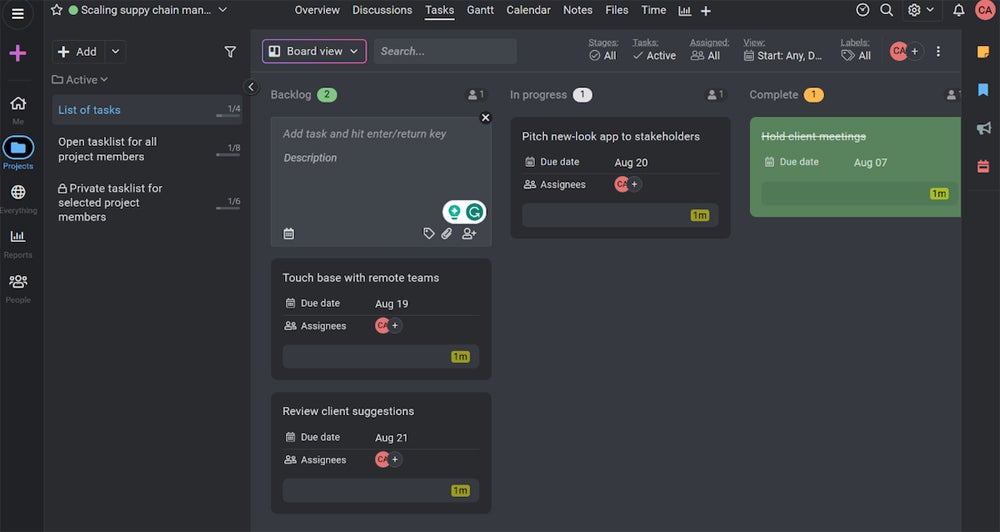
Integrations
ProofHub’s top integrations are Google Drive, Dropbox, OneDrive, Box and Zapier.
Pros and cons
|
|
Do you need an alternative to Trello?
Trello’s main strength is its simplicity and easy learning curve: Teams and individuals can quickly add new boards and cards without menu-diving or other navigation hassles. However, although this is Trello’s biggest strength, it can leave users feeling like they want more from their project management tool. Should you find yourself yearning for more advanced features, like native time tracking and Gantt charts, or dealing with complex workflows and projects that are likely to exceed Trello’s capabilities, then yes, you need an alternative to Trello.
Trello also experienced a data breach in January, affecting 15 million users. So if security is a concern, you should look at other options.
How do I choose the best Trello alternative for my business?
You can choose the best Trello alternative for your business by evaluating key factors like features, integrations, user experience and pricing. Assess the core features of any tool you’re considering setting in Trello’s place. Does the tool have the features you need for your project management? For instance, tools like ClickUp and Asana offer lots of features and customization options, which qualifies them for diverse workflows and larger teams. In contrast, simpler tools like Taskade might be ideal for smaller teams or individual users due to their ease of use and straightforward setup.
Consider tools that integrate well with your existing software, like Google Workspace, Microsoft Teams or Slack. Most of the tools listed above integrate seamlessly with Microsoft or Google Workspace. Plus, the user interface and experience will impact team adoption, so consider intuitive, user-friendly designs. And of course, pricing and scalability are also essential — ensure the tool fits within your budget and can scale as your team grows. Out of the 10 tools covered, eight offer free project management software plans that can give you basic functionality and help you decide which tool works best for you and whether you’ll consider upgrading to premium tiers.
Methodology
To give you these 10 options, we first analyzed Trello to understand its value proposition, strengths and weaknesses. We then considered these factors, especially the weaknesses, to see where other tools can maintain Trello’s strengths while turning its weaknesses into further strengths. We also considered that some users may want to change, not because Trello is a weak tool but because they prefer a different feature set. With Trello’s user experience in mind, we tested the 10 tools to understand how they differ from Trello and who they are for.
Best overall: ClickUp Best for complex projects: Wrike Best for customization: monday.com Best for agile development: Jira Best for enterprise project management: Microsoft Project Best for real-time collaboration: Taskade Best for productivity: Hive Best for scaling teams: Asana Best for spreadsheet project management: Airtable Best for simple project management: ProofHub Trello is a pioneer of…
Best overall: ClickUp Best for complex projects: Wrike Best for customization: monday.com Best for agile development: Jira Best for enterprise project management: Microsoft Project Best for real-time collaboration: Taskade Best for productivity: Hive Best for scaling teams: Asana Best for spreadsheet project management: Airtable Best for simple project management: ProofHub Trello is a pioneer of…
